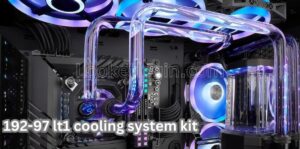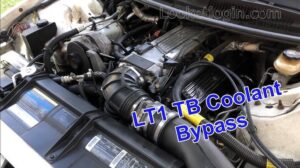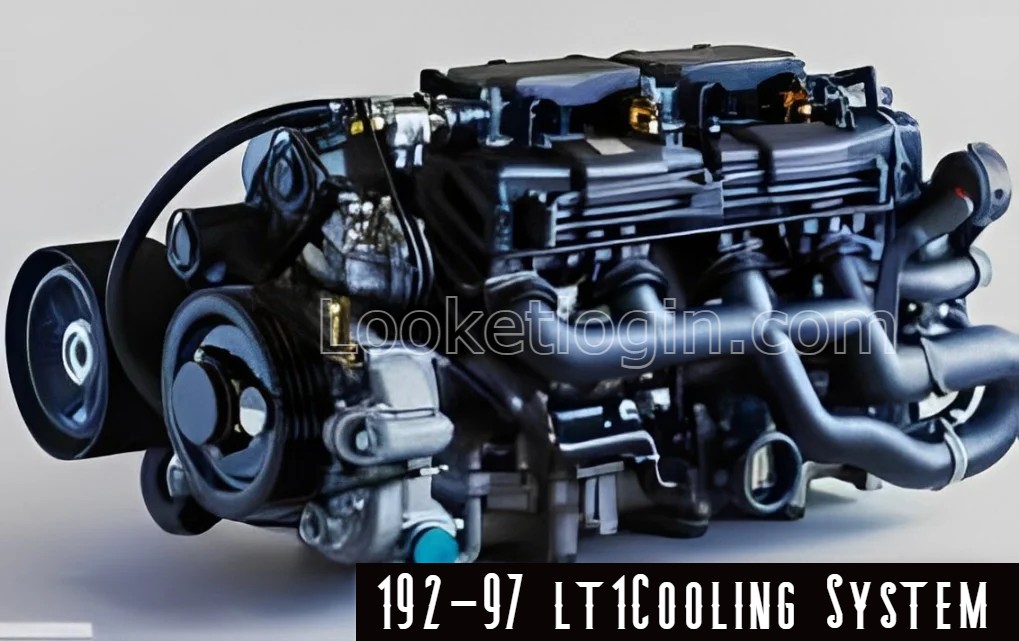Your LT1 cooling system is probably the most crucial element of your LT1. This cools your LT1 engine to a suitable temperature.
Proper service instructions and savvy upgrades can keep your LT1 engine running smoothly for a long time. Avoid overheating, save your dollars from costly repairs.
In this article, we are going to see some of the most important upgrading maintenance tips to help you take the best out of your 192-97 LT1 Cooling System.
What is the 192-97 LT1 Cooling System?
The 192-97 LT1 Cooling System referred to cooling in a system that could help retain temperatures within which the LT1 would not overheat; thus, it comprises the numerous essential parts such as radiators, thermostats, water pumps, and hoses which together keep up the temperature in a specific set of driving conditions.
How To Identify Problems in the 192-97 LT1 Cooling System
Early detection will save you the money you will spend on costly repairs. You may notice the following;
- Overheating engine: An abnormal increase in temperature gauge.
- Coolant leaks: You may see puddles or drips of coolant under your vehicle.
- Coloured coolant: A sign that your coolant is breaking down or has contaminants.
- Loss of coolant: Constant replenishment of coolant in your vehicle.
Preventive Radiator Maintenance to Attain Maximum Cooling
This makes the radiator the core of the 192-97 LT1 Cooling System, and it needs more care. Clean thoroughly of debris, dirt, or rust that may clog airflow and impede its cooling.
Flush your radiator every couple of years to remove blockages or contaminants that can impede the functioning of your radiator.
- The thermostat must be replaced.
- The thermostat in your 192-97 LT1 Cooling System controls the flow of coolant into the engine.
- A bad thermostat can cause the engine to run too hot or too cold, and that is a performance problem.
- Periodic replacement of the thermostat keeps your engine running at its sweet spot.
Upgrade Your Water Pump to Increase Flow
The water pump circulates coolant throughout the system. Eventually, the pump will wear out; therefore, coolant flows poorly and possibly overheats.
A high-performance water pump upgrade will guarantee your 192-97 LT1 Cooling System holds up to the rigors of the high-performance engine.
Flush and Fill Coolant for Better Performance

The coolant degrades with time and cannot cool the engine. The cooling system is flushed and refilled with fresh high-grade coolant every 30,000 miles or according to the manufacturer’s recommendation on the recommended schedule to keep the engine cool in extreme temperatures.
Hoses Function in the 192-97 LT1 Cooling System
Coolant hoses give the system an avenue for coolant sharing among components such as radiator, the engine, and the water pump.
Over some years, these hoses turn stiff and crack. Cracks cause leakage of the coolant.
If such hoses undergo check-ups from time to time, then they halt damages and system failure, too. The coolant loss cannot make the cooling system showcase low efficiency.
Performance radiator use in radiators to make the radiator more efficient
A performance-enhancing upgrade to your LT1 engine or even just normal driving in a hot climate will make all the difference in the 192-97 LT1 Cooling System with an upgrade to a high-performance radiator.
These radiators are built for greater heat loads and better cooling under demanding conditions, thus avoiding overheating when accelerating or towing.
Radiator Cap: A Small Component That Makes All the Difference
The radiator cap maintains pressure in the cooling system. Therefore, coolant flows in a normal way.
If the radiator cap is faulty or degenerated, then coolant will boil or lose its pressure leading to overheating.
The replacement of the radiator cap from time to time ensures that the operating pressure under which the system will be at maximum optimum.
High Flow Water Pump Upgrade
Obviously, an upgrade to a high-flow water pump is in order for those pushing the 192-97 LT1 Cooling System to its higher performance levels.
This has increased coolant flow, which improves on cooling the engine, especially in stress conditions such as racing or aggressive driving.
Installation of Coolant Temperature Gauge for Monitoring
This helps you determine problems in good time; thus does not cause catastrophic failure.
A coolant temperature installed will make it easy for you to be able to observe and track your engine temperatures.
This is how one learns to become conscious about the healthy conditions of one’s 192-97 LT1 Cooling System.
Coolant Reservoir Tank Normal observation
It has extra coolant that allows the coolant to expand with warmth. The reservoir is to be checked for cracks or leaks so that it is not changed in the coolant level.
A leaking reservoir causes coolant leak, and the result is overheating.
Prevention of Air Pockets in the Cooling System
Air pockets also prevent the flow of coolant and also create a hotspot.
While servicing the 192-97 LT1 Cooling System, it would be extremely wise to bleed the system pretty well so that air, which sticks in the system, could be evacuated.
Coolant flows evenly throughout the engine this way.
Fans Upgrade for Better Cooling
If the car is idling or driving very slowly, a cooling fan needs to draw air past the radiator to cool it.
An upgrade to a better or electric cooling fan will improve airflow in keeping your 192-97 LT1 Cooling System stable with engine temperatures when experiencing stop-and-go traffic or hot performance driving.
Cooling System Maintenance Proper Coolant Levels

Coolant is an essential in avoiding overheating of an engine. Coolant levels need to be checked from time to time in your 192-97 LT1 Cooling System and topped off when necessary.
Coolant levels that can cause low temperatures may lead to overheating.
However, when the coolant level is sufficient, then the cooling system will work perfectly.
Benefits of Performance-Specific Coolants
There are so many benefits of switching to a high-performance coolant.
These coolants are designed to be more resistant to heat and also prevent corrosion in the cooling system due to their stricter specifications designed for high-performance LT1 engines.
They will ensure that your 192-97 LT1 Cooling System performs well when put under pressure.
Prevention of Cooling System Failures by Inspection
Regular inspections on your 192-97 LT1 Cooling System will prevent potential issues from becoming worse.
Check the radiator, water pump, hoses, thermostat, and coolant level. Doing routine maintenance means the system will run very smoothly without overheating.
Signs Your LT1 Cooling System Needs Urgent Attention
Look for signs that can develop: leaks of coolant, some bad smells, or change in temperature. If your 192-97 LT1 Cooling System shows any of these signs, check the system and fix the problem before damage happens to your engine.
Cooling System Upgrades for Modified LT1 Engines
It has been modified to operate at high-performance so would involve some upgrading on a few parts in your 192-97 LT1 Cooling System.
The upgraded parts would involve a radiator, a high flow water pump and sturdier hoses so the engine does not overheat while under stress.
Conclusion
The cooling of the 192-97 LT1 cooling system is part and parcel of the performance and long life of your LT1 engine.
Maintenance, up-grades at the right time, and smart-cooling upgrades will ensure that your engine stays cool and operates perfectly.
Whether you decide to keep the original design of your car or simply change it for better performances, these tips will work out to keep your 192-97 LT1 Cooling System in good form and avoid overheating, which may affect how the engine will run effectively.





